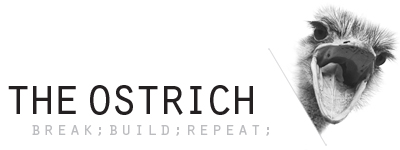
After installing Meteor, I thought I will continue with the tutorial, in my learning process. But then I found out that Coursera is offering a free Introduction to Meteor.js Development course that just started last week. Since the course was approaching the end of week 1, I decided I’d go ahead and join the it!
Why MOOC?
I don’t usually take online courses to learn things like Meteor (or, more generally, development technologies). From my experience, “just using it to do something” is more efficient. But that experience is based on mandatory C++ courses in undergrad school 12 years ago, so it may not be very up-to-date 🙂 .
The trigger for me in this case is the timing. The fact that the course started just when I started my learning process seemed like a lucky coincidence that I shouldn’t “pass”.
I think that if I wasn’t doing this documented learning process I would probably skip the course. Documenting somehow motivates me to cover more of the available learning resources – maybe so I can provide wider feedback?
About the course
This course is actually the third course out of six in a Responsive website development and design specialization that Coursera is offering, in cooperation with the University of London. I’m not taking the specialization, just this course, so I might be missing some background from the previous two courses.
It’s a 4-week course, instructed by Dr. Matthew Yee-King, from the Computer Department, Goldsmith, University of London.
Here’s the “about the course snippet”:
- About the course snippet from the Coursera website
Of course, you can read this, and more about the syllabus on the course site.
My impression of the course so far
I completed the first week of the course over the weekend. It included watching videos about installing Meteor, creating projects, running them, and some mocking with templates and template helpers. Every instructional video was ~10 minutes long, with a short follow-up quiz to verify understanding (or listening, to be exact).
The final “week 1 assignment” included a bigger quiz and a programming assignment. The programming assignment involved creating a basic app (just like I did when I installed Meteor), and then performing some changes to the HTML, the template itself, and adding a simple template helper.
The approach to evaluation is interesting. For every step I uploaded a screenshot of my running app, and part of the course requirements are to review submissions of other participants. Each submission should receive 3 “crowd-sourced” reviews. I don’t think this is a good approach to evaluation, but that’s how it’s working in this course (at least so far).
The content so far is really good in my opinion. The instructor is clear and fluent. The rate of information is a bit challenging for beginners, though. I don’t know if this is related to the fact that I skipped two background courses, but I feel that we’re going through tons of new concepts very quickly, and it’s going to be hard to solidify the concepts that way.
I think I have a good grasp of the client-server architecture, but when it comes to the details of the client itself, it gets mushy for me. What’s the relation between Blaze, Spacebars, Handlebars, and who’s responsible for what? When using Bootstrap, how does it fit in the client architecture? Does it interact with Blaze in some way? I saw that Blaze can be replaced with React or Angular – what does that mean, and how does that affect everything else?
Summary
I’m guessing it’s too late to join the course now, if you’re interested, but there probably will be more classes soon.
I’ll update with further impressions as the course progresses.
Are you taking other courses in the specialization? Would you recommend it?










November 30, 2015
I agree with your summary. I just finished week two and I am liking the course. The instructor is a good communicator. I am a beginner to this kind of web development, though I’ve worked with HTML and CSS for well over a decade. It’s challenging, but good.